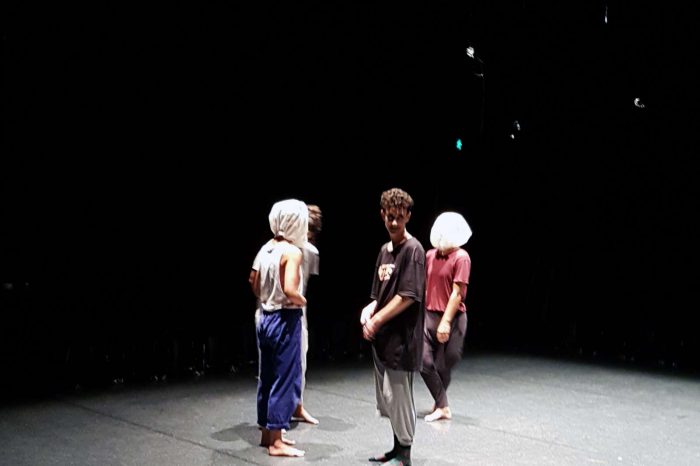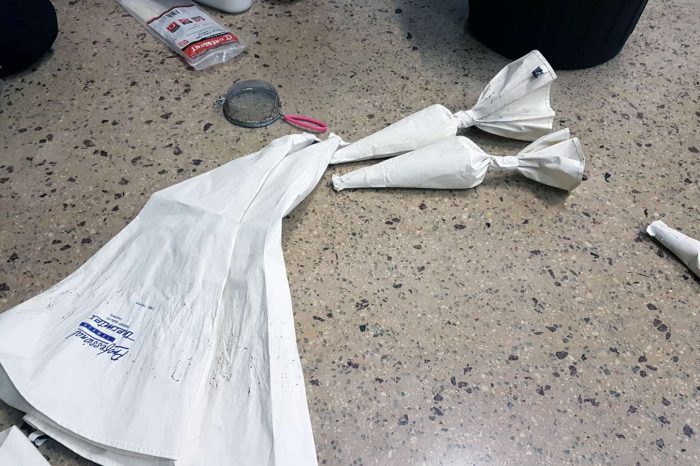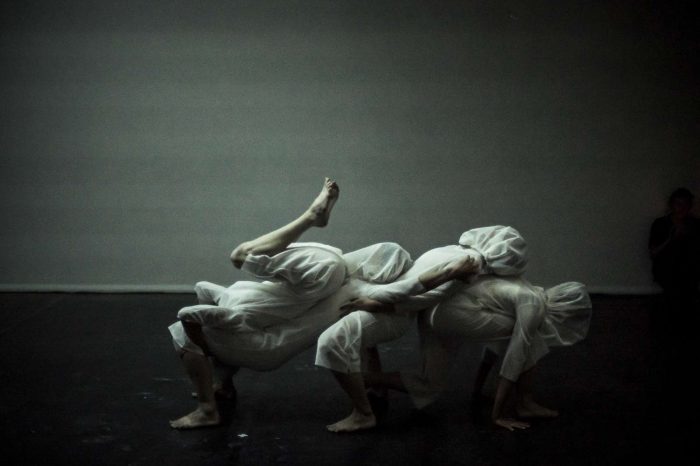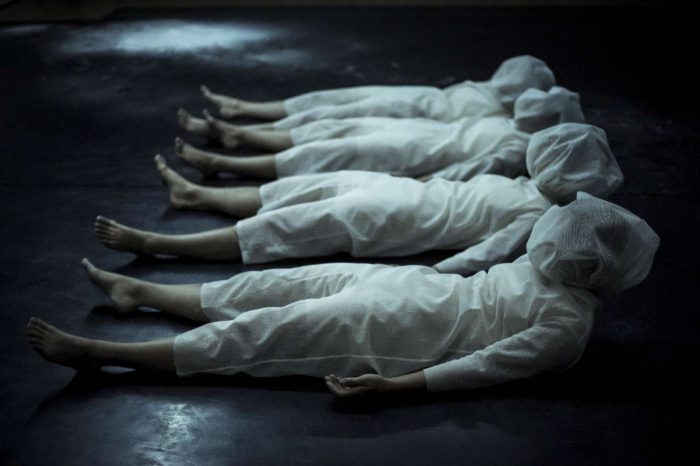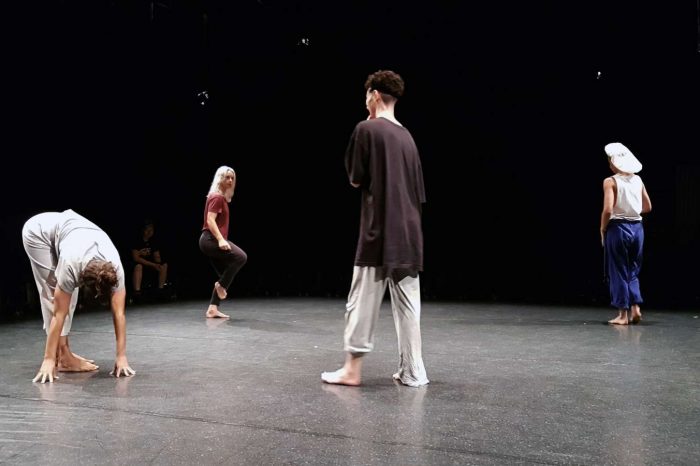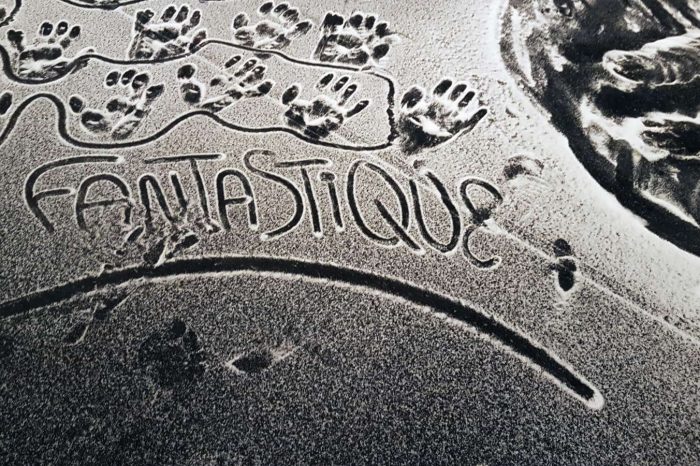the catharsis of a good Q & A

Liz Rogers, Artback NT’s Performing Arts Manager, reflected upon the successful Q & A’s following the perception experiment. The show invited audiences to explore time and space in an innovative and experiential live dance performance, sound and sculptural installation. The following article provides an insight into the inception of ‘the perception experiment’ and offers a rare glimpse of the relationship between dancer and audience.
So often there is the danger that offering up ways for audiences to engage with shows can be seen as a form of tokenism. It is definitely not the intention of those who make it their business to program, but not everything hits the mark when touring takes you to such varying places.
With the perception experiment, however, the Q & A opportunities following some of the shows were held with such respect and avid interest, rarely did anyone leave when the lights came up. It not only became an opportunity to ask burning questions but audiences also had a chance to debrief about an experience that was truly mesmerising. In fact, quite frankly, if this show tours again, it needs to be an ‘opt-out’ activity, rather than an ‘opt-in’.
Imagine you’re in the audience around the performance space, people seated on all four sides. The floor is dusted with a covering of salt and covered in patterns etched by hands and feet. The show has ended, the performers have received your applause, the lights come back up and the dancers, Frankie Snowdon, Madeleine (Maddy) Krenek, Kelly Beneforti and Ashleigh Musk seat themselves in one corner and look at us. It’s our turn. There’s a pause. Then the first person speaks.
Who thought it up?
Frankie: It was Maddy and I’s concept and then we brought on some really amazing collaborators. Kelly [pointing] was there from the beginning, and Ash [gesturing] joined us a year ago to tour the performance, but we had another dancer, Tara, [at the start] so four dancers. We were basically like,
We’ve got all these ideas, can you help us use your magical bodies and brains and bring them to life?
And they were consummate and very obliging collaborators. Then we had an amazing sound designer Darcy Davis and Jen Hector who did the lighting. All of those people came together to make the dream.
What’s been the most special part about taking this show around the country?
Ash: I’ll start. I think the most interesting part for me has been seeing the complete contrast of ‘place’. I’m from Brisbane and I’ve never been to Western Australia. I’ve never been much in Victoria or New South Wales either. I think it’s been really interesting and eye-opening just to take the show to so many different people who have so many different realities in terms of climate and size. It was amazing to hear so many diverse responses such as “I saw this thing that reminded me of chaos” but someone else saw the show and it reminded them of something really calm. These contrasts were coming up all the time.
Frankie: I’m feeling really nostalgic. We’re coming to the end of the tour so I feel one of the most amazing things is being together. We get to do this thing that we dreamt up four years ago. Four years later, we’ve just spent a year touring it. Last year we took ‘the perception experiment’ to Melbourne, then Mexico, then Darwin, and now this month nationally. It’s been quite a journey. Monday at 2 o’clock will be the last time we ever perform the show. So it’s really special to be with these people [dancers] who have seen ‘the perception experiment’ through to its biggest life. The experience has been so amazing, especially with the world feeling a little crazy and that this piece we’re performing is alive and can bring us all together. The structure demands a lot of trust and this vulnerability means the audience needs to be trusting of us as performers and us trusting of them – that exchange is special. We have had intimacy with over 2,000 people during the life of the show and that is also amazing.
What’s the concept behind the salt and the head coverings? The movements are so intimate but it wasn’t sexual. Was the salt related to the sea? For me, it felt amorphous, like something together but not quite together. Like you say there was vulnerability, is that why there was salt coming from the ceiling?
Frankie: No, but there is an element of the landscape. The concept of the salt came from a practice or interest of Maddy’s. Did you want to talk about that?
Maddy: Sure. I started working with salt back in 2015 as a way to highlight bodies and behaviours under positions or tasks of stress. For example, I was fascinated by the way the body does a lot of micro-movements just to complete a task and I wanted to explore a way to highlight these tiny micro-movements. To do this I experimented with different substances and landed on salt. When Frankie and I got together to start making this piece, this was where I was coming from. As we began, the salt and what it represented and what we were creating started to evolve. So in that sense, the work does speak to environment.
Frankie: Yeah. The other thing that was going on while Maddy was trying to show what her body was doing with salt. I was teaching myself particle theory and quantum physics. Essentially, I was trying to ‘disappear’ my body in a live performance; trying to dance myself into a state of demolecularization. So then we kind of jammed these things together and started looking at particles and molecules and atoms and matter and existence. We were interested in how these things could intermesh and form a dance. What was unknown to us at the beginning but has become a huge part, was the role of sound – the frequencies that are in the sound design are all binaural frequencies that have become a big safety blanket. This sound phenomenon is happening around us [when we dance], the waves, and how they affect the salt. Initially, we looked at a lot of cymatics and how different frequencies played through a little plate of salt. As we tweaked frequencies, the salt would shift and make different patterns. So we looked at how sound affected those particles and how it might be affecting our molecular structures.
Interesting that you say the non-sexualised body because that was a huge part of it – being completely anonymous. We really wanted to be just blank canvases for the audience to read into what we were doing in ‘action’ rather than ‘perform a dance together’.
We’ve done a lot of Q & A’s this tour which is just so nice.
Maddy: We’re getting really succinct at speaking.
Frankie: Maybe not me [laughs]. But there have been some comments about the hoods. In Warrnambool, two people weren’t into it. “You shouldn’t have done that – why did you take your hoods off? You shouldn’t have done that!” They clearly felt quite strongly about the trajectory of the work and how ‘the reveal’ shifted them out of what they had been experiencing. We’ve thought about it a lot! Do we take them off, do we leave them on? We’ve never left them on. It’s also logistical. We can’t see through them. Especially when there’s more light.
At the start of the performance, audiences are led into the performance space one-by-one. Shoes off, they are guided gently in by a dancer, and placed in the darkness. Standing on stage, the experience is immersive, the sculptural soundscape engulfs the space.
How did the different audience members respond to being led out into the dark space?
Frankie: Most really, really get into it. Most people are grateful for that. There’s a lot of thinking around ‘time’ for this show and how we can blur the line between where something begins and when you think it’s beginning. So we really wanted to create a situation of stripping away your own expectations of what it is you’ve come to see, what you normally do when you come to see a dance show. If you’ve never seen a dance show before, then you’ll think ‘oh, all dance shows must be like this …’ which would be sick! But generally, people have been “I didn’t realise I needed that time.” I don’t know – how did you feel?
It was nice to be led in, and the touch was very gentle with your hands. I was happy to stand there. The audience size was good, I can’t imagine fitting more [people] in the space.
Frankie: At Darwin Festival we had 100 people standing in the same amount of space, and it took ages to get everyone in [audience sizes are normally capped at 80]. Some of the people that were standing right at the front were kind of speaking and moving dreamily, “I wasn’t ready to come out of it”.
Maddy: That time spent in the darkness with no visual information allows for when there is information, to see so much more of the work. If you were sitting there, like now, and snapped into the show with 5 minutes of us going from here [gestures high] to there [gestures low] it would have been harder to watch. The time in the darkness with less information, allows you to see more of those micro-movements.
Kelly: Everyone [the audience] has been amazingly committed to doing that first part. In Warrnambool, I led in a woman who was quite elderly, and later I found out she was almost deaf. We had a conversation “would you like to sit down” and eventually she said, “I want to stand.” People have really, absolutely wanted to have their turn in that space with us, this is the time that we try to make the most comfortable and the space a safe environment for someone. And when you get that feedback – even if it is energetic – you know people are really committed to being there in that space and it’s just a beautiful exchange. A non-verbal exchange.
Who gets to clean up the salt?
Maddy: We do that.
Frankie: We all do it.
Maddy: We’ve done it sooo many times!
Kelly: So if anyone would like to stay back and help us out … ?
What’s the meaning of the screaming? Can you explain a bit of that?
Frankie: We were playing with sound again, and it was a bit of a happy and interesting accident. Literally, I think it was in the first development. We were like “what would happen if we screamed into each other’s mouth?” We were looking at making that sound happen.
Maddy: All of us screamed at the one time. In the show you see only two.
Frankie: Yes, all four of us tried it. We also tried to dance and scream – that’s really difficult. But we did it, and all of a sudden the frequency, the pitch shift just created this live binaural situation that we were all like “What was that?! That was amazing.” And then it just started speaking to the capacity of the body to be imitating all of these other phenomena for us to be physically embodying some of the other elements that were in play. When we first did it in Alice Springs in 2017 there were some really beautiful comments around screaming into a void – you know when you’re in the desert and you go into the open space and just try and make noise, try and affect the space. No matter how loud or how big you are, the Earth is just so much bigger than you – the sound just doesn’t go anywhere. So that kind of screaming into a cavern or screaming into an empty space, there’s something about that for me too. It’s also a really interesting counterpoint to other things that happen in the work. “Boom! Something else is happening” and then after that the trajectory – it kind of crafts the decisions.
Do these symbols represent anything? The drawings in the salt?
Frankie: Mainly just the number patterns that we were working with and how to make symmetrical shapes, but there’s no underlying meaning particularly to any shape. The experiment was in shifting the movement.
There’s a lot of trust in yourselves and one another in moving. I was curious about whether there were any injuries in terms of colliding with one another.
Frankie: No.
Maddy: I did something with my shoulder in the first development because we were trying a few things. But once choreographed it was set.
Frankie: It’s been a pretty tight ship.
Kelly: It doesn’t mean that everything goes exactly the same every show. Sometimes we’ll feel different or we don’t necessarily fit exactly where we should …
Maddy: Kelly caught a foot in the face before the show when we were practicing.
Frankie: It was a gentle tap.
Kelly: We all have our part, so it’s never one person’s ‘fault’ and likewise it’s just the nature of live performance as well.
Frankie: And sometimes there are things like the caterpillars shape. No one person is holding it there. No one can change their position after they’re there. I mean they probably could, but it’s a tensile structure. Every person in every moment of it depends on the other person to be in the right spot at the right time … and to lower to the floor. So there’s a huge amount of trust. We dance together a lot. Most of the work is the four of us all together, so I guess that listening really is also what we’re trying to do.
Awesome. Thank you. We can stop there. It’s beautiful to have done the work for you here. Thank you for coming. Feel free to touch the salt. Enjoy!
This is a transcription from the Q & A session held at Godinymayin Yijard Rivers Arts & Culture Centre in Katherine, Saturday 14 March 2020. This was the final stop of their month-long tour through regional Australia, and completion of sharing the work which had also taken Guts Dance to Melbourne, Mexico and Darwin. The borders of the Northern Territory closed to the other states and territories of Australia on Tuesday 24 March due to COVID-19. All members of the touring party were able to return safely to their various homes in Alice Springs, Darwin, Melbourne and Brisbane.
Show images: Performers Frankie Snowdon, Madeleine Krenek, Kelly Beneforti and Tara Samaya in ‘the perception experiment’, 2017, GUTS Dance || Central Australia. Photographer: Pippa Samaya
Rehearsal images: Performers Frankie Snowdon, Madeleine Krenek, Kelly Beneforti and Ashleigh Musk rehearsing at Dancenorth in Townsville. Photographer: Liz Rogers
Pre-show images: Preparing salt prior to their final show at Godinymayin Yijard Rivers Arts & Culture Centre in Katherine. Photographer: Liz Rogers


